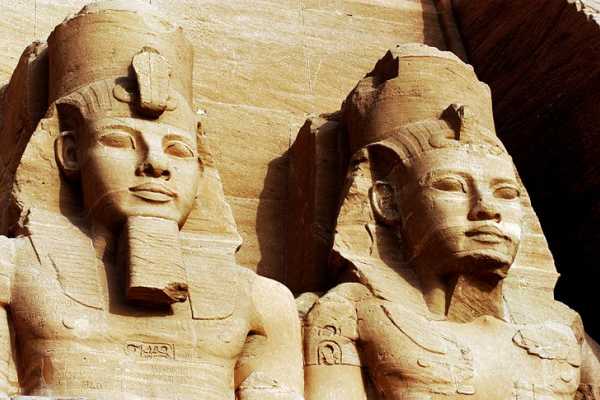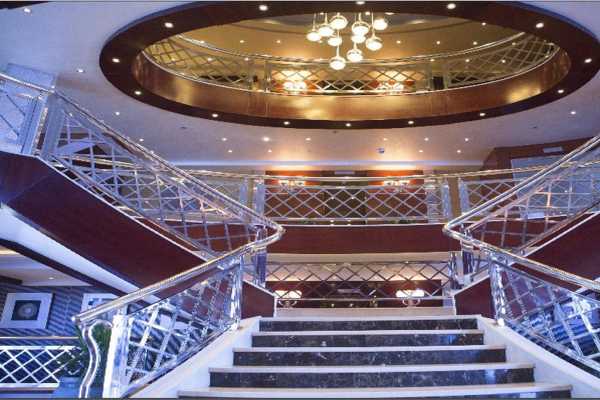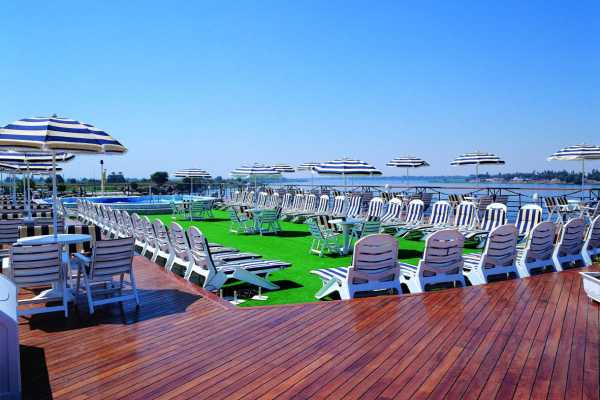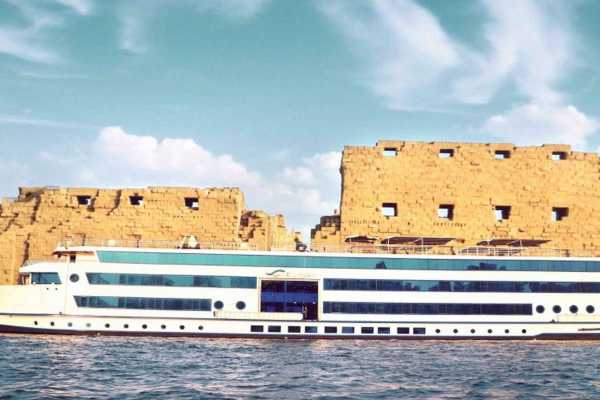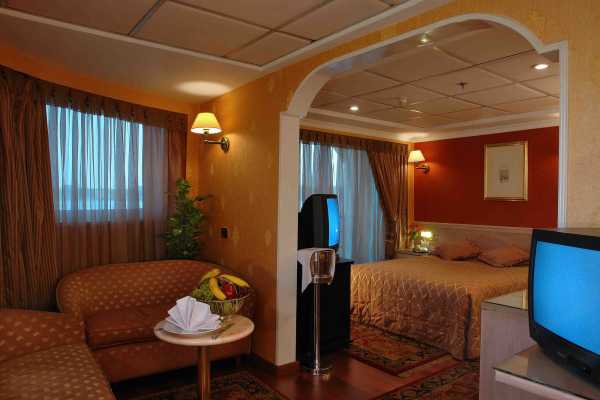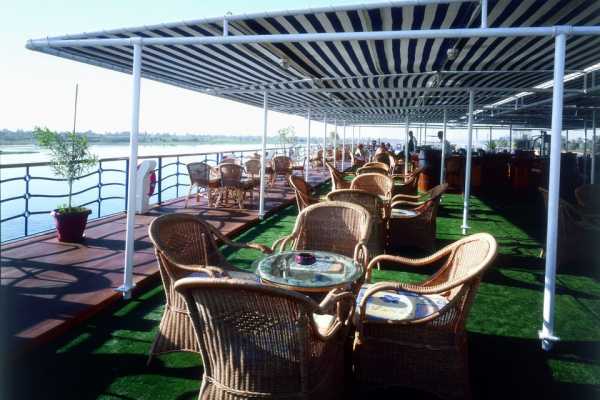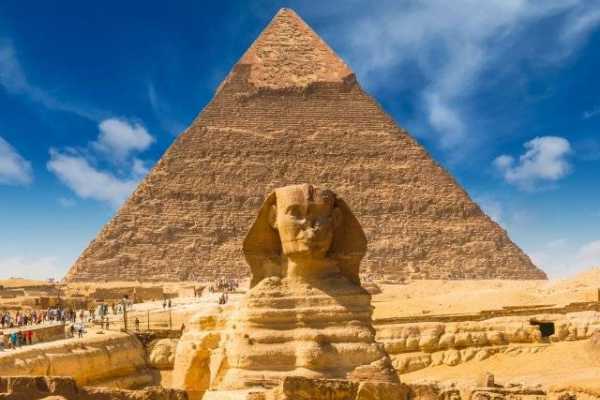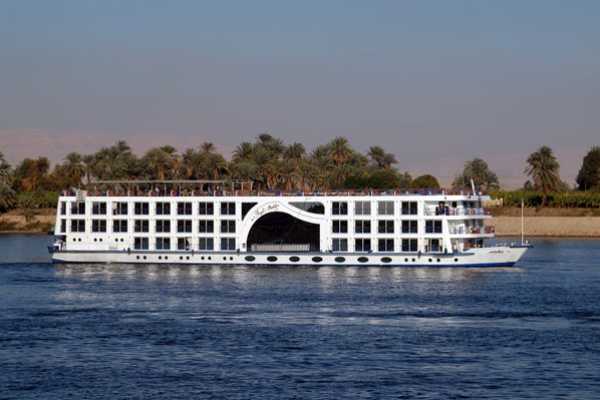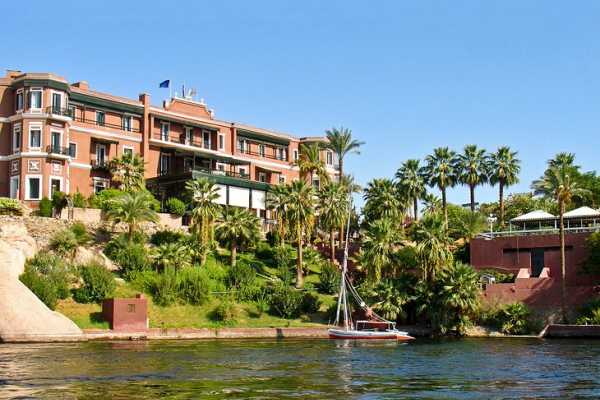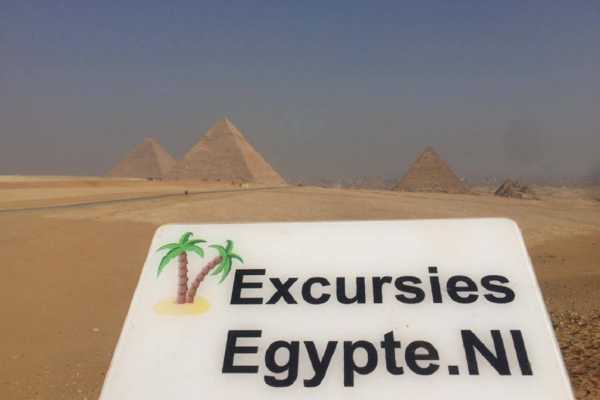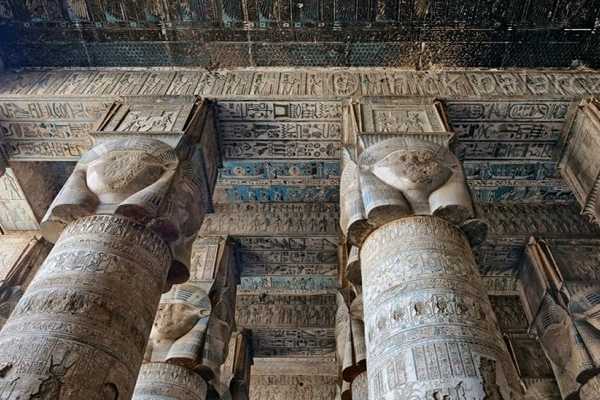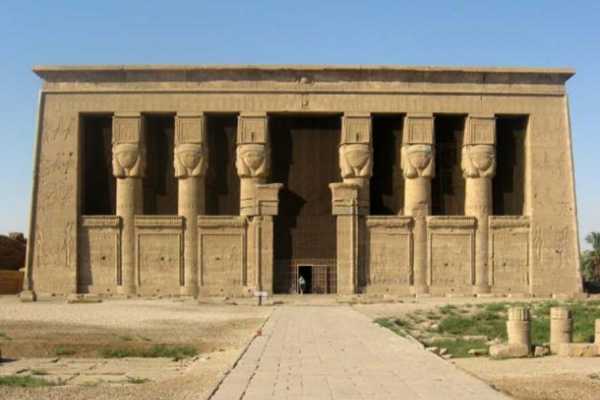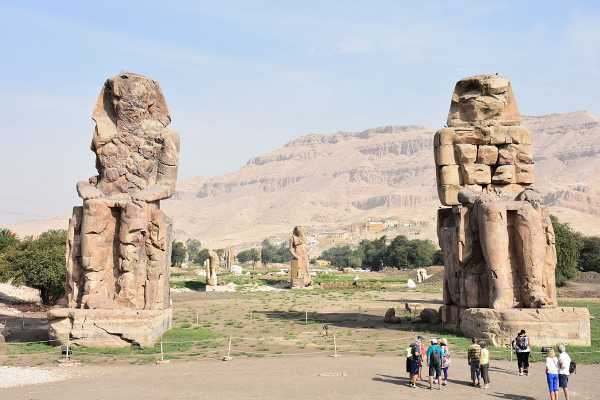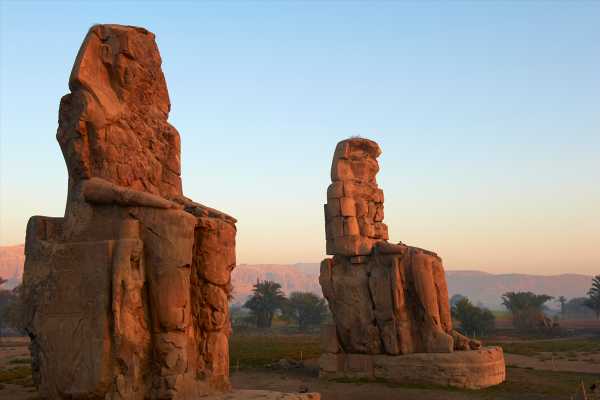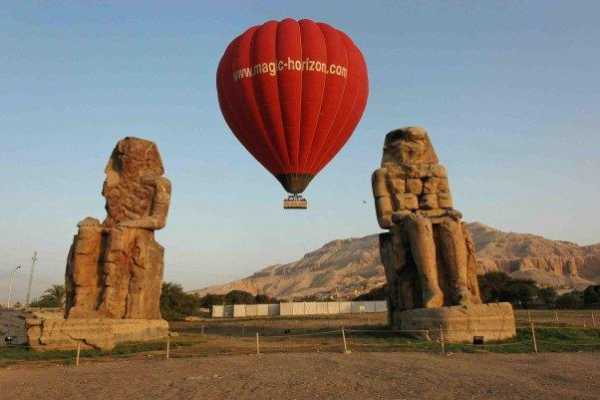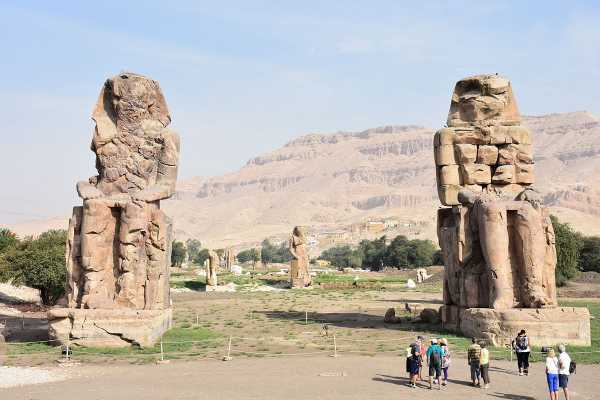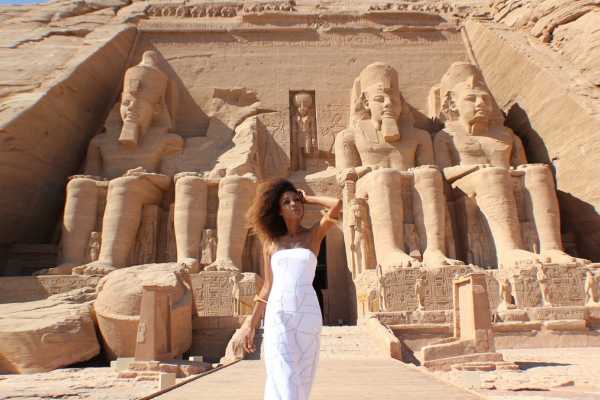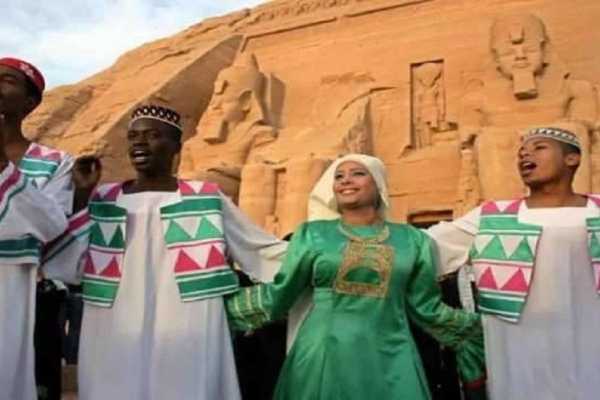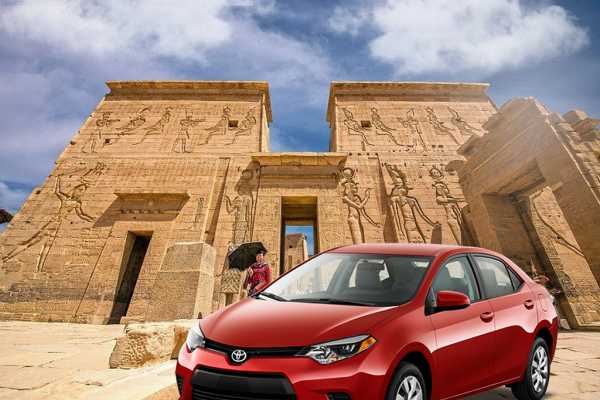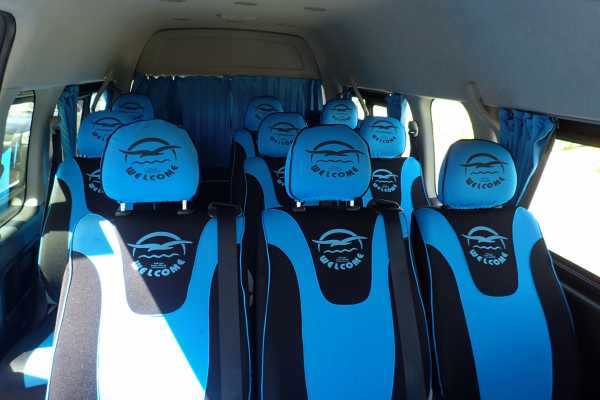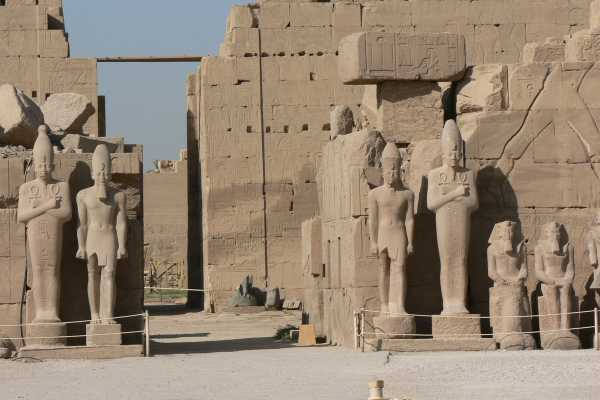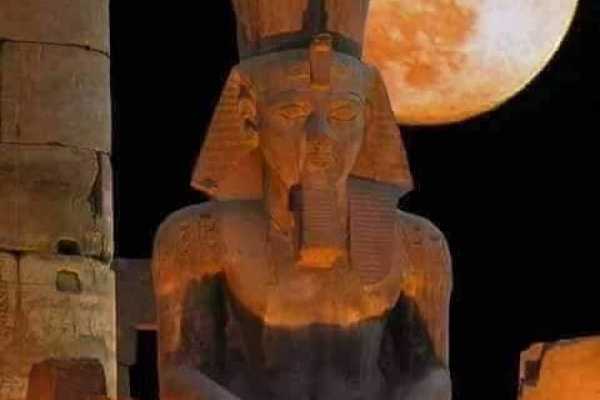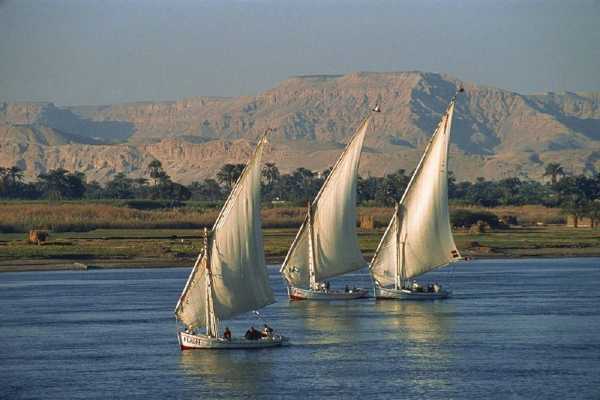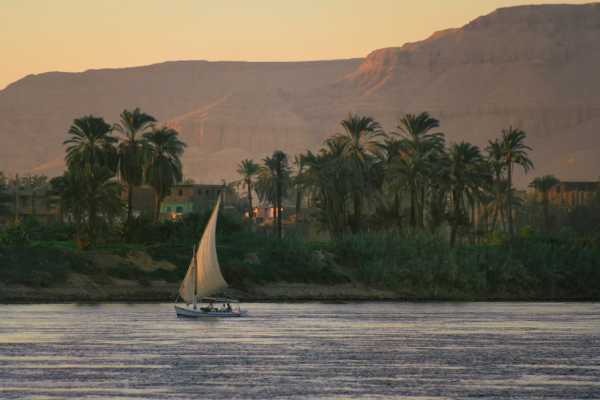The Valley of the Kings
Ever since Howard Carter opened up King Tut's tomb to reveal the treasures of the child king, the Valley of the Kings has captured the imaginations of travellers. The vividly painted tombs of Thebes' pharaohs allow visitors a glimpse at the burial rites and death rituals of Ancient Egypt, and today remain Luxor's West Bank's greatest and most popular attraction.
A visit here is a highlight of any Egypt trip but can be demanding due to the stifling heat and swarms of visitors. It's important to note that tombs open and close to the public in rotation in an attempt to help preserve the wall paintings, which have suffered severe degradation from the humidity caused by so many visitors. Most tombs listed below are usually open. They are listed in order of their tomb number
Valley of the Kings tomb
Tomb of Ramses VII (1)
The Tomb of Ramses VII is a small, unfinished tomb. It's much smaller, with just two chambers and a corridor, than many other tombs due to hasty finishing, as the pharaoh died unexpectedly. A Greek inscription shows that this tomb was known and accessible during the Ptolemaic period.
Tomb of Ramses IV (2)
Tomb of Ramses IV | Dennis Jarvis / photo modified
An ancient staircase with a ramp in the middle leads to the entrance of this tomb. Look on the lintel of the door to see Isis and Nephthys worshiping the sun, with the ram-headed sun god and a scarab depicted within. On the right-hand entrance wall, you can see two figures of Copts raising their hands in prayer. According to an inscription, one of them is "Apa Ammonios the martyr." The scenes and inscriptions were painted on stucco, almost all of which has fallen away. In the main chamber is the pharaoh's granite sarcophagus covered with inscriptions and reliefs.
Tomb of Ramses IX (6)
Tomb of Ramses IX
This beautiful tomb has some excellent wall paintings. In the first corridor on the left-hand wall, you can see the pharaoh depicted in the presence of Harakhty and Osiris. Farther along, above the doors of two small undecorated chambers, is a text from the Praising of Re.
Just beyond the second chamber is a text from the 125th chapter of the Book of the Dead, which contains a declaration by the dead man of his freedom from sin. On the right-hand wall, the pharaoh is depicted in a chapel in the presence of Amun and the death goddess Meretseger. Above the doors of the side chambers are representations of snakes and dog- and bull-headed spirits, with an inscription giving the beginning of the "Sun God's Journey through the Underworld."
In the second corridor, look on the left to see a snake rearing up in a vertical position. To the right of this and in the niche are figures of gods (from the Praising of Re), while below the niche is the king, followed by the goddess Hathor. Beyond this, on the left, are texts from the Book of the Dead and then a scene of the pharaoh in the presence of the falcon-headed Khons-Neferhotep, with a falcon hovering over his head.
The third corridor depicts the pharaoh presenting an image of Maat to Ptah, before whom the goddess herself is standing. Beyond this, you can see the pharaoh's resurrection (his mummy lying on a hill with his arms raised above his head), with a scarab and the sun above the mummy.
From here, you enter the first chamber with its roof supported on four pillars. A short passage runs down to the tomb chamber, which contained the sarcophagus. On the wall are figures of gods and spirits. On the vaulted ceiling are two figures of the sky goddess, representing the morning and evening sky, while below her are constellations and stellar barques.
Tomb of Ramses II (7)
This tomb was plundered in antiquity, and the mummy was then removed to Deir el-Bahri. On both sides of the entrance corridor, in raised hieroglyphs, are texts from the Praising of Re. The scenes and inscriptions in low relief are badly damaged.
Tomb of Merneptah (8)
Tomb of Merneptah
The entrance corridors, with texts from the Praising of Re (on the left a very fine painted relief of the king before Re-Harakhty) and scenes from the Realm of the Dead (from the Book of the Gates), run fairly steeply down to an antechamber containing the granite lid of the outer coffin.
From here, steps lead down to a three-aisled hypostyle hall with a barrel vault over the central aisle and flat roofs over the side aisles. In this chamber is the lid of the royal sarcophagus depicting a recumbent figure of the pharaoh. The lid, which as usual is in the form of a royal cartouche, is beautifully carved in pink granite. The carving of the pharaoh's face is particularly fine.
Tomb of Ramses VI (9)
Tomb of Ramses VI
This tomb, originally begun for Ramses V, is notable for the excellent preservation of its painted sunk reliefs (though they are inferior in style to those of the 19th Dynasty). Three corridors lead into an antechamber, beyond which is the first pillared chamber with which Ramses V's tomb ended. On the left-hand walls, you can see scenes of the sun's journey through the Underworld according to the Book of the Gates.
Two corridors, with scenes from the sun god's journey through the Underworld according to the Book of what is in the Underworld, lead into another antechamber, the walls of which are covered with texts and scenes from the Book of the Dead. Beyond this is the second pillared chamber, still containing remnants of the great granite sarcophagus. On the walls are texts relating to the Underworld, while on the vaulted ceiling are two figures of the sky goddess, representing the day sky and the night sky, with the hours. The tomb contains numerous Greek and Coptic graffiti.
Tomb of Ramses III (11)
Reliefs in the Tomb of Ramses III
Although the reliefs are not particularly well-executed here, they are notable for their variety and the excellent preservation of the colours. In the first corridor, to the right and left of the entrance, you can see the goddess Maat kneeling, sheltering with her wings those who enter the tomb.
In the third side chamber, look up to the upper row of scenes on the left to see a kneeling Nile god bestowing gifts on seven fertility gods (with ears of corn on their heads. The fourth side chamber, on the right, was the pharaoh's armory and contains wall paintings of the sacred black bull Meri on the "Southern Lake" (on the left) and the black cow Hesi on the "Northern Lake" (on the right).
The sun's journey during the fourth hour of the night is depicted on the fourth corridor. This leads you into the sixth chamber with a sloping passage with side galleries and four pillars, on which the pharaoh is depicted in the presence of various gods. Walls on the left (beginning on the entrance wall) show the sun's journey through the fourth part of the Underworld (Book of the Gates), while the walls on the right depict the sun's journey through the fifth part of the Underworld (Book of the Gates).
In the seventh chamber, you see the pharaoh conducted by Thoth and the falcon-headed Harkhentekhtai on the right, while on the left, the pharaoh is presenting an image of Truth to Osiris. In the tenth room, the pharaoh's sarcophagus once stood. His mummy was found at Deir el-Bahri and is now in the Egyptian Museum in Cairo.
The landscape of the Valley of the Kings
Tomb of Ramses I (16)
A sloping corridor and a steep staircase leading down to the tomb chamber, in the middle of which is the open red granite coffin of the king, with pictures and texts painted in yellow. The walls of the chamber are covered with coloured scenes and inscriptions. On the entrance wall, look to the left to see Maat and Ramses I before Ptah. To the right, Maat and the pharaoh are making an offering to Nefertum, while behind is the symbolic knot of Isis.
On the left-hand wall to the right of the door and above it are scenes from the third section of the Book of the Gates. First we see the gateway, guarded by a snake, then the journey through the third division of the Underworld. In the middle, the boat is being drawn by four men towards a long chapel in which are the mummies of nine gods.
Tomb of Seti I (17)
Wall painting in the Tomb of Seti I
The tomb of Seti I is also known as Belzoni's Tomb after Belzoni opened up the tomb in October 1817. The reliefs are far superior in quality and the state of preservation to any others in the Valley of the Kings. It was closed to visitors for years due to preservation issues but has recently been opened again and is now one of the Valley of the King's star attractions.
Scenes of the sun's journey through the fourth division of the Underworld (fourth part of the Book of the Gates) are depicted in the first pillared chamber. At the beginning is the fourth gateway, guarded by a snake, then, in the middle row, the solar barque drawn by four men, while in front of it are spirits with a coiled snake, three ibis-headed gods, and nine other gods ("the spirits of men who are in the Underworld").
From the first pillared chamber, a flight of 18 steps leads down by way of two corridors with representations of the "opening of the mouth" ceremony into an antechamber, with fine reliefs of the pharaoh in the presence of various gods of the dead. A short flight of steps leads into the second pillared chamber. The scenes and inscriptions in this room are merely sketched out in red and black on stucco. On the pillars, the pharaoh is depicted before various deities. The scenes on the rear wall show the sun's journey during the tenth hour of night (10th part of the Book of what is in the Underworld).
Beyond is the third pillared chamber, from which a ramp flanked by steps leads down to the mummy shaft. This consists of a front portion with six pillars and a rear portion with a vaulted roof, on a lower level. In the front section are scenes in the realm of the dead from the Book of the Gates. In the rear section was the pharaoh's alabaster sarcophagus, now in the Soane Museum in London. The king's mummy was found at Deir el-Bahri and is now in the Egyptian Museum in Cairo.
Tomb of Tuthmosis III (34)
Tomb of Tuthmosis III
The Tomb of Tuthmosis III is in a narrow and steep-sided gully some 250 meters south of the tomb of Ramses III. A sloping corridor down to a staircase with wide niches on the right and left, with a farther corridor beyond, leads to a square shaft five to six meters deep, probably intended to deter tomb robbers; it is now crossed by a footbridge. The roof has white stars on a blue background.
Beyond the shaft is a chamber with two pillars, and on the walls are lists of 741 different deities and demons. At the left-hand end of the rear wall, a staircase leads down to the tomb chamber, which has the oval shape of a royal cartouche. The ceiling, with yellow stars on a blue background, is supported on two square pillars.
The walls are covered with well-preserved scenes and texts from the Book of what is in the Underworld. Those on the pillars are of particular interest. On one side of the first pillar is a long religious text, while on the second side are Tuthmosis III and his mother in a boat (at the top) and the king suckled by his mother in the form of a tree (below).
The sarcophagus is of red sandstone with painted scenes and inscriptions. It was empty when the tomb was opened, but the mummy was found at Deir el Bahri. The grave goods from the four small side chambers are now in the Egyptian Museum in Cairo.
Hieroglyphics in the tomb of Tuthmosis III
Tomb of Amenophis II (35)
From the entrance, steep flights of steps and sloping corridors descend to a shaft (now bridged over), at the foot of which is a small room, and beyond this, the first chamber (undecorated) with two pillars. At the left-hand end of the rear wall is a flight of steps leading down to a sloping corridor, at the end of which is the second chamber with six pillars. To the rear of this chamber, on a lower level, is a crypt.
On the pillars, the king is depicted in the presence of the gods of the dead, while on the walls are finely executed scenes and texts from the Book of what is in the Underworld. In the crypt is the king's sandstone sarcophagus, in which the mummy of Amenophis II was found intact with a bunch of flowers and garlands. On each side are two chambers in which many mummies, no doubt brought here to be safe from tomb robbers, were found including those of Tuthmosis IV and Amenophis III (18th Dynasty) and Siptah and Seti II (19th Dynasty).
Tomb of Tutankhamun (62)
Tomb of Tutankhamun
Discovered by Howard Carter on November 4, 1922, the Tomb of Tutankhamun is by far the Valley of the King's most famous tomb. Tutankhamun was the son-in-law of Akhenaten, and died (in circumstances unknown) in his 18th or 19th year. Although the tomb was broken into soon after the pharaoh's burial, it remained almost intact, together with its rich furnishings. These furnishings, the famous "Treasures of Tutankhamun" (mostly now in the Egyptian Museum in Cairo), were the largest and most valuable find of grave goods ever made in Egypt, giving an overwhelming impression of the splendor of a royal burial in Pharaonic times.
A flight of 16 steps leads down to the entrance on the east side of the tomb. The doorway opens into a narrow passage, 7.5 meters long, and at the far end, another door gives access to an antechamber, the largest chamber in the tomb, which was found filled to overflowing with grave goods of all kinds. At the southwest corner (far left) is a side chamber. At the north wall, two life-size wooden statues of the pharaoh were found.
In the middle of the chamber is the sarcophagus, of yellowish crystalline sandstone. Its sides are covered with religious scenes and texts, and at the corners are four relief figures of goddesses with wings protectively outspread. The pharaoh's mummy was contained within three richly decorated wooden coffins inside the sarcophagus.
On the east side of the tomb chamber is a small store room. On the walls of the chamber are painted scenes, rather hastily executed, showing Pharaoh Ay, Tutankhamun's successor, performing the "opening of the mouth" ceremony on the mummy, and Tutankhamun making offerings to various gods.
Valley of the Kings History: Ancient Egypt's Necropolis of the Pharaohs
Valley of the Kings History: Ancient Egypt's Necropolis of the Kings
The valley takes its name from the sumptuously furnished tombs constructed here for the pharaohs of the 18th, 19th, and 20th Dynasties. In contrast to the pyramid tombs, which had previously been favored, these tombs consist of a series of passages and chambers hewn from the rock. Like the chambers within the pyramids, these were intended only for the reception of the sarcophagus: the temples dedicated to the cult of the dead pharaohs were built in the plain.
The tombs usually have a succession of three corridors leading into their innermost recesses. The third corridor leads into an antechamber, beyond which is the main chamber, its roof often supported by pillars, with a cavity in the floor in which the heavy granite sarcophagus was deposited.
Adjoining the main chamber are various subsidiary chambers. Since it was believed that the dead man, accompanied by the sun god (or perhaps having become one with the sun god), sailed through the Underworld at night in a boat, the walls of the tombs were frequently adorned with texts and scenes depicting this voyage and giving the dead man instruction on its course.
The scenes and texts were chiefly taken from two books closely related to one another. The first is the Book of what is in the Underworld, which has 12 chapters, since the Underworld (Duat) was thought of as being divided into 12 parts or caverns, corresponding to the 12 hours of the night. In the center of each of these scenes is a river on which the ram-headed sun god and his train are sailing in the solar barque, briefly dispensing light and life. The banks of the river, above and below, are populated by spirits, demons, and monsters, which greet the sun god as he passes, and fend off his enemies.
The second book is known as the Book of the Gates, which also deals with the sun's nocturnal voyage through the 12 parts of the Underworld. Between these various parts are massive gates guarded by giant snakes, whose names the dead man must know. Two gods and two fire-breathing snakes guard the approach and greet the sun god. In other respects, the conception of the Underworld is similar to that of the first book.
A third work can be called The Sun God's Journey through the Underworld. It depicts the sun god addressing the spirits and monsters of the Underworld, who are exactly portrayed in long rows. Other texts used in decorating the walls of the tombs were the Praising of Re (or Litany of Re) and the Book of the Opening of the Mouth. The former, which appears in the first two corridors, contains a hymn to the sun god, whom the dead man had to invoke under 75 different names when he entered the Underworld in the evening. The latter teaches the various ceremonies, which had to be performed in front of the statue of the dead man so that it could eat and drink what had been set out for it in the tomb.

